
by Julia Felton | Feb 28, 2018
“Make trust an integral part of your professional relationships—or kiss success goodbye”.
Recently I ran a workshop all about the art of communication and how only by communicating effectively can you seek to build great relationships. These relationship, whether in your personal or work life, are essential if you are to succeed. How often have you seen a potential client purchase from someone else even though you had a better product or could offer a better service? I see this all the time and the reason it happens is that people buy people. We trust people that we have formed rapport with and with whom we have a great connection.
And it was no different on our workshop. The delegates experienced the most success when they were able to drop into horse-time and really spend time connecting with the horses. From this place of deep connection trust built which eventually led to them developing a magical partnership. A true win-win situation where the horses walked freely around the arena with my clients, with no ropes or constraints. So why did they walk with the client out of their own free will? Because they trusted my clients and felt safe. There was the right mix of trust and respect in the relationship which meant that both parties showed up fully present and were engaged in having a meaningful connection.
The insights for our clients was immense as they fully experienced, often for the first time, how true connection really feels and how it impacts each party. How it is reliant on a combination of trust and respect and how when you have have great connection the horse (or a potential client) will want to be with you and follow you. No more sales conversations required! How engagement for both parties improves when trust is present.
Trust is everything, especially if you are leading another person, a team or a company toward a shared goal or mission. Without a credible reputation, your followers will be hesitant, uncomfortable and unsure of whom they’re really following. And that insecurity, that lack of confidence, can crumble the loyalty and united support that’s vital in an organisation’s success.
So how do you become trustworthy? Remember, good intentions are just the beginning. Here are 15 ways to build and strengthen your credibility as a leader, adapted from Follow Your Conscience by Frank Sonnenberg, author of Marketing to Win and Managing with a Conscience.
1. Show people that you care about their needs.
2. A promise should be as binding as a contract.
3. Never sacrifice a long-term relationship for a short-term gain.
4. Don’t expect people to look up to you if you look down on them.
5. Give credit where credit is due.
6. The danger of shooting from the hip is hitting yourself in the foot.
7. Take the time to provide the rationale behind your recommendations.
8. Be objective.
9. Stand up for the things that you believe in. (Waffles are for breakfast.)
10. Never ask someone to do something that you’re unwilling to do yourself.
11. Your actions must match your words.
12. Think before you open your mouth.
13. You gain more by making others look good than by singing your own praises.
14. Words spoken in confidence are words spoken in trust.
15. Few people will fault you for being tough, if you’re fair.
So what are you doing to build trust and create deep, meaningful relationships? How are you staying connected to your tribe? What are you giving to the relationship with no expectation of return? What can you do to build better relationships and connection today?
Your investment in building relationships will repay itself 10x over, if you just invest the time and energy to truly connect.

by Julia Felton | Feb 21, 2018
Trust needs to be reciprocal and shared. We don’t trust rules, we trust people. Courage comes from leaders whose responsibility it is to protect the people working below them. People have confidence to do the right thing when they feel trusted by their leaders. It is leaders who energise the business culture to enable team members to reach their full potential, resulting in superior business performance.
Leaders cannot break trust with people and continue to influence them; it simply does not happen. Once trust is lost and the leaders influence is destroyed then team performance dwindles. Once this occurs sales are impacted as people buy from people they know, like and trust. Without trust, the organisation loses productivity, relationships, talent, customer loyalty, creativity, morale, revenue and results. This is why trust, not money, is the currency of business.
“Trust is like a mirror … once its BROKEN you can never look at it the same again…”Unknown
Lack of trust is prevalent in business today. Team members no longer trust employers to look after them. Long gone are the days when people had a job for life. Today businesses quickly downsize when economic conditions get tough. There is little loyalty from team members to employers or vice versa. The financial crisis of 2008/9 has made more and more people distrustful of banking institutions, as well as the government’s ability to handle these situations.
The diagram below clearly illustrates the consequences and impact of high versus low trust in a business:
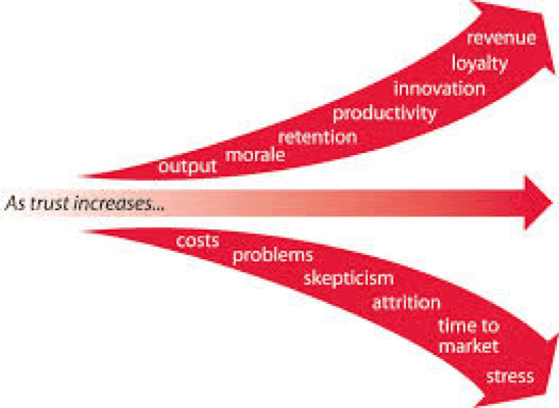
To earn the trust of their team members, leaders must first care for their well-being and connect with them. To earn trust, trust must be extended. The best way to do this is to create a caring environment that enables people to fully engage their heads and hearts.
High Trust Environments Are Life Changing
In the VUCA world in which we now live there is only one certainty and that is change. Change is forged through relationships and the foundation of effective relationships is trust. During change trust will be tested at best and broken at worst which is why high trust relationships are essential to your change effort’s success. When you are the people you work with trust one another, you have one another’s backs as change unfolds. Instead of keeping your head down, you keep an eye on where you can step in and offer extra support. Instead of allowing change to unravel your relationships, you leverage change to strengthen your relationships.
The result is that everyone pulls together in the same direction and no-one is left behind. Communication and engagement improve as team members start asking how they can best contribute and support the change. How can they make a real difference? When the leader and team members are aligned in the right place, contributing to the right work with the right people then team members feel valued and become more highly engaged. Which only has positive benefits for the organisation as productivity and profitability increase.
“Increasing employee engagement by 10% can increase profits by US$2,400 per employee per year”. Accenture
if you’d like to learn how to increase trust and employee engagement in your organisation then please reach out to me for a conversation.
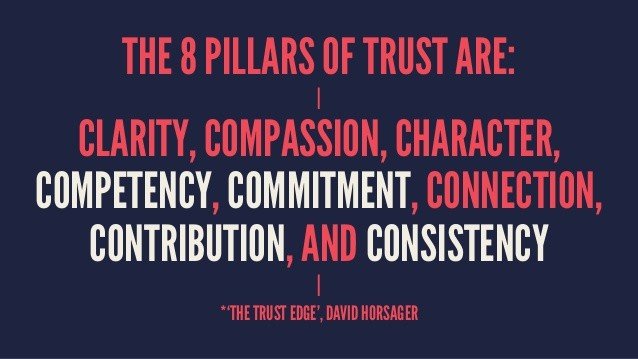
by Julia Felton | Feb 14, 2018
So how do we build trust in organisations?. What actions can leaders take to create a trust based culture where team members feel fulfilled and give of their best of each and everyday? .
In the book the Trust Edge, eight pillars of trust are identified that when used together help individuals and therefore organisations to become more trustworthy. These are:
1. Clarity
People trust the clear and mistrust the ambiguous. Clarity unifies and motivates, it increases morale and inspires trust. Clear communication leads to trusted colleagues, happy team members and satisfied customers.
2. Compassion
People put faith in those that care beyond themselves. Caring leads to trust. Great leaders think beyond themselves and put people before thongs to improve relationships.
3. Character
People notice those who do what is right over what is easy. Building integrity tales work but also yields the biggest rewards. Great leaders always ask: “Is this the right thing?”
4. Competency
People have confidence in leaders who stay up-to-date with relevant new ideas and concepts. As a leader make sure to continually stretch your mind to discover new ideas, fresh thoughts and concepts. Engage in continual learning and surround yourself with inspiring and motivating people, who challenge you
5. Commitment
Passion is the essential ingredient of commitment. When people are committed to a cause they will go out of their way to make things happen. People who stick with you when times are tough are those that you can trust.
6. Connection
People want to follow, buy from and be around people they like and trust. As a leader ensure you engage and collaborate with team members and customers and really listen to what they need.
7. Contribution
People respond to results. Give your attention, resources, time, opportunity and talent to make a difference. As a leader you must deliver results in order to be credible and be trusted.
8. Consistency
People love to see the little things done consistently. It gives them security and comfort. Trust is built over time so ensure the same quality of results is delivered every time to build trust.
When these eight pillars are implemented in organisations then leaders enjoy improved relationships, reputation, retention, revenue and results. Which of these trust pillars will you start implementing in your organisation today? What will be the impact on your ability to navigate change if you increase trust levels by just a few percentage points.
From my experience the most highly trusted organisations thrive as they enjoy higher levels of team engagement, morale productivity and innovation, all factors which enable the business to be agile and respond on-the-hoof to changing business situations.

by Julia Felton | Feb 7, 2018
Many traditional corporate organisations are struggling to adapt to the demands of a new world that is rapidly changing around them. They are clinging on to the same ideas, talent management models, and ways of working with leaders who are either oblivious to the current mindset or too frightened to instigate change. Research by the GC Index suggests that Game Changers, the very people with the potential to initiate and drive transformational change, are rarely able to make their mark in corporate settings.
Game-changing is different to innovation. Innovators build on what has been done before: the pursuit of excellence through continuous improvement and incremental change. It’s Game Changers who can help trigger and drive transformational change.
The reality is that many organisations are driving their vision through the need for innovation. They often deliver this in quite a controlled way, by investing in innovation hubs, labs, processes and programmes.
So here are six ways that organisations that create game changing teams and cultures
1) FOCUS ON CONTRIBUTION
We need to do more than focusing solely on past experience and who is ‘available’ to work on a project. Instead, we should focus on the real contribution that individuals can make – focus on who is ‘best’.
By understanding what each person can contribute to their team, project and to the wider organisation, leaders are far more likely to create a game-changing culture.
2) IDENTIFY YOUR GAME CHANGING TALENT
In a world where today’s employee can be tomorrow’s competitor, identifying and embracing Game Changers is critical to long-term business performance. The GC Index is a new organometric, which enables organisations to identify their Game Changers.
Companies are using The GC Index to better understand the profile of their organisation and teams. It helps them maximise the contribution individuals can make at all levels and to ensure they create game-changing teams.
3) HELP GAME CHANGERS TO DEVELOP CORPORATE SKILLS
Most Game Changers find it difficult to navigate their way around a traditional corporate organisation. As a result they are often seen as dysfunctional or slightly awkward.
It’s important to help Game Changers understand the contribution other people make, and how others can help realise their game-changing idea.
By helping them recognise that some people will find their game-changing nature unsettling at times, and by giving them the tools to influence other people, they are far more likely to be able to make a positive game-changing contribution.
4) CREATE A GAME CHANGER COHORT
The CG Index research suggests Game Changers appear to naturally group together – by doing so they are able to express themselves freely and often more likely to realise their potential. There are lots of examples of this, whether it is in Silicon Valley, artists in Paris, or Fintech hubs in global financial districts.
Giving Game Changers a space to work together can promote both knowledge transfer and retention, in addition to increasing commitment and engagement through valued interpersonal connections.
5) FOCUS ON CULTURE CHANGE – EDUCATE MANAGERS
A fifth priority for organisations is to acknowledge that without changing the attitudes of managers and leaders, the engrained culture will continue to undermine progress towards achieving a game-changing culture.
We need to educate managers so that they understand the importance of game-changing talent and how to manage Game Changers. We also need to get them to start shifting their mindsets and put contribution and impact at the heart of their talent decisions. This focus on contribution will break down any inherent ‘unconscious bias’ and move managers out of the ‘fail safe zone’ to one where firstly they themselves feel ‘safe to fail’.
6) FIND A GAME CHANGER CHAMPION
Creating a game-changing culture requires an element of risk and therefore it’s important to have a Game Changer champion at the top.
It really needs someone on the Board who understands Game Changers and what is required to ensure they deliver value. Ground breaking creativity and innovation may lie with one individual. But it’s only a game-changing team that can achieve step change innovation and transformation that has longevity.
If you want to discover more about what type of Game Changer you are then why no join us for the launch of The ChangeMaker Profile powered by the GC Index on Tuesday 27th February in London. You can secure your place here.
The ChangeMaker Profile powered by the GC Index is a focused solution for those in the world of change and change management, which was developed in response to world-wide client demand. It leverages its framework of impact and contribution to support individuals, teams and organisations, throughout the transformational change process and is often used by organisations and individuals alongside other change management tools to give them the foundation to kick-start their change journey.
The profile allows people to understand how they can play to their natural strengths and maximise their contribution to change as an individual and as part of a team.
Can’t make the event but want to learn more, simply drop me a line at Julia@businesshorsepower.com and we can have a conversation to explore how this solution could benefit your organisation.
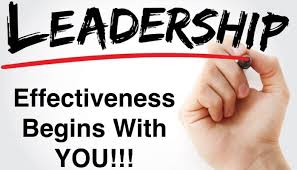
by Julia Felton | Jan 31, 2018
Recently as I prepared for delivering a Leading Through Change programme I thought I would research the different leadership models that exist. Boy was that a bad idea, as there are a plethora of models all extolling some different perspective. Nothing right or wrong with any of them, but the challenge is that they all focus on something outside the leader. In essence, they forget that the leader is an integral part of the situation and that a leadership style is not something you can simply adopt. It must be something that comes from within. That’s why I love this quote:
“If you want to be a leader, the first person you must lead is yourself” Mike Scioscia.
In my first book Unbridled Success, I looked at the concept of Leadership Begins With You, and now executive coaches and faculty members Ray Luther and Eric Johnson of Indiana University’s Kelley School of Business have coined the phrase Self-Observant Leadership to describe the principle that you can’t effectively lead others until you know how to lead yourself.
Self-Observant Leadership occurs when you deeply understand your identity, compare it to your reputation (how others experience you) and then make meaning of the observations and choose to adapt. It is a refinement on authentic leadership as it acknowledges that as a leader you need to understand yourself and how you’re perceived, then making behavioural changes to become the leader you want to be, even if it means operating outside the identity you’re comfortable with.
So how do you deliberately practice Self-Observant Leadership? Luther and Johnson share the following 6 steps:
- Live your values.
Your values are the GPS which you live your life by. They shape what activities and behaviours you engage in and yet many people really know what their values are. Your identity is grounded in your values, and in your purpose
- Move towards purpose.
Purpose is the other component of your identity. Understanding your profound Why, is what gets you out of bed in the morning. It is what drives your mojo and helps you sustain continual activity in the face of adversity. What’s the reason why are doing what you are doing? What legacy are you creating? What impact do you want to make in the world? With a clear understanding of your values and purpose in tow, you can then compare your identity to how you’re perceived.
- Learn from feedback.
Feedback is the breakfast of champions, so pay attention to it, both internal and external. This will help you gain insights into how you’re perceived. Be open and ready to accept some things you don’t want to hear, because it is only by knowing more about ourselves and how we are perceived that we can hope to develop.
- Be Present.
Self -Observant leaders live in the moment. They are present and grounded and so consciously aware of the effect they are having on others.
- Reflect.
Reflection separates good leaders from great leaders. By understanding the gap between how you see your identity and how you’re perceived by others, you can then make adjustments. Journaling is a powerful tool here. Take 5 minutes at the start of every day to reflect on the values and purpose you want to embody and then review this for 5 minutes at the end of the day to see how you did.
- Adjust.
Leaders take action and Self-Observant Leader are no different. They adjust their behaviours so they can be the best, both for themselves and their team. As leaders we need to have courageous conversations and yet for some people this might be outside their comfort zone, and yet to not have these conversations would not be serving your team members, who need to understand both the positive and negative about their performance. Whilst having courageous conversations might not be a leaders natural thing to do, to deprive team members of the opportunity to develop is also a travesty.
I’m curious to hear what you think about the principles of self-observant leadership and whether you subscribe to the tenant that “leadership begins with you”.
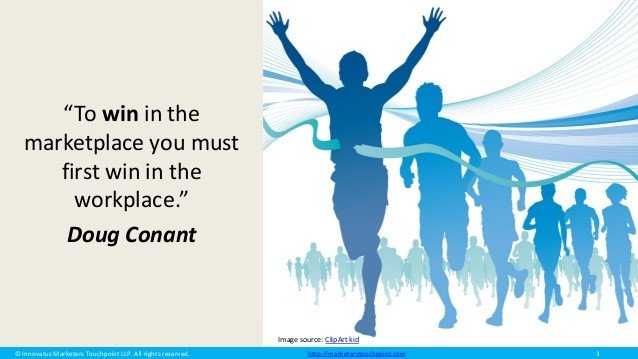
by Julia Felton | Jan 24, 2018
Talent wins games, but teamwork and intelligence wins championships” – Michael Jordan
Team dynamics is one of the overlooked parts of a business. Yet it affects so much of a how a business operates, from the individual in the team to the company as a collection of teams to the entire market place. If a team is out of sync or out of flow, things happen slowly or at worst not at all. There is a lack of employee engagement and productivity as accuracy levels decrease, absenteeism increases, motivation is lacking and an unhealthy degree of competitiveness exists.
Team members make your company’s success and in an era that is so focused on technological advancements effective teamwork is your biggest competitive advantage. Yet so many companies are failing to grasp the value of increasing team engagement and the incredible benefits it can bring.
Gallup has been tracking employee engagement in the U.S. since 2000. Though there have been some slight ebbs and flows, less than 33% of U.S employees have been fully engaged in their jobs during these 15 years meaning they are involved in, enthusiastic about, and committed to their work and workplace. Worldwide, only 13% of team members are engaged.
More alarming Gallup’s 2016 survey for the UK reveals that the percentage of UK employees feeling engaged at work has plummeted to just 8%, down from 17% in 2012. In other words, only one in 12 British employees are highly involved in and enthusiastic about their work. These employees psychologically “own” their work, helping move their organisations forward by driving performance and innovation. The bulk of employees in the U.K. –73% — are classified as “not engaged,” and the remaining 19% are “actively disengaged,” resentful that their workplace needs aren’t being met and likely to be acting out their unhappiness on the job.
Here are some signs that your team might be underperforming:
- low levels of trust between team members
- team members are not able to handle conflict constructively
- the team is misaligned and lack commitment
- there is no compelling vision
- there is no accountability for the results
- unable to compete projects on time and within budget
- the business is losing marketshare and is failing to innovate
So why do team members become disengaged and fail to deliver value to the business? Oftentimes it is because the team is so busy they don’t have the time and energy to reflect on how things are going and what they could do better. In today’s frenetic business environment team members seem to have to continually react to situations rather than having the time to pro-actively plan, review and reflect on what is happening. This re-activity means that team members are often chasing their tails and figuratively going round and round in circles. This is why so many businesses have stalled and are not growing and being as productive as they could be. (It is no surprise that UK productivity levels are so low when employee engagement is so low – there is a direct correlation).
Another challenge brought by globalisation is the number of cross cultural and cross boarder teams. Many of these have different reporting lines with team managers who sometimes have different agendas for the success of the team. This lack of clarity brings uncertainty and can result in poor levels of trust and communication, meaning that there is no coherent approach to tackling the barriers to success.
Effective teams have the potential to turn around a company. By aligning their expertise teams can unleash their hidden potential and accomplish more than was initially conceived. It is definitely a case of 1+1=3. And yet as the Gallup statistics reveal many organisations are under-performing and simply not operating at their optimal potential.
A blueprint on how to operate in a high-performance manner exists in nature. Nature understands the importance of teamwork, as every function in nature is inter-dependent on one another. The crops can’t grow without water; animals can’t survive without food and water. There is an eco-system in nature which works in collaboration to ensure a harmonious existence. Now if only we could get our teams to work in the same way!

by Julia Felton | Jan 16, 2018
“What can horses teach me about authentic communication” and the answer is lots. When partnering with the horses:
- you get the opportunity to drop into the space of “horse time”. Away from the stresses and strains of daily life you are able to slow down, reflect and experience the power of real connection
- you have to communicate with your heart and not your head. All authentic communication starts with a heart felt connection and the horses are masters at letting us know how true we are being to ourselves
- you have to be present, grounded and paying attention. If you don’t the horse will simply ignore you
- you get to experience the power of non-verbal communication and how it can influence others
- you experience how emotions can disrupt the communication channel
The great thing about learning from horses, who are master communicators, is that you will learn how to synchronise your intention – mentally, emotionally and physically. You will get unbiased, immediate feedback on your communication style. And importantly if what you are doing isn’t working you get the opportunity to recalibrate and try a different approach. Interacting without verbal communication allows participants to discover a whole new world in the process!
Working with horses demands that you be very clear in your communication both verbal and non-verbal. Horses do not understand words and therefore rely on reading body language and energy. You will experience how to align your energy in such a way that your communication becomes clear and concise.
What type of world or work environment do you create for yourself through your communication? Is it supportive, inspiring and powerful or could it be improved? When you start using this new knowledge with others they will feel motivated, excited and willing to work with you, which will lead to new levels of performance.
To discover more how horses and help you develop your authentic communication skills (and leadership and team working skills too) lets have a chat. You can book into my diary here or better still join us on the next Art of Authentic Communication workshop.

by Julia Felton | Jan 3, 2018
Communication skills are vital to our success in business and life, and yet how many of us appreciate the unless we communicate authentically we may well be sabotaging our own success. When we fail to communicate effectively team members, colleagues, clients, suppliers and family members can get frustrated leading to stress and anxiety. And just like poor communication can have a negative ripple effect within the business, authentic communication can actually help businesses become more collaborative, innovative and creative leading to greater productivity and profitability. And its the same with your family and friends too.
So Why Is Authentic Communication Important?
Authentic Communication is a heart-centred way of communicating in which you allow your Authentic Self to do the talking and listening instead of your fear-based Ego. When we engage in authentic communication we move from just being in a transactional relationships to forming real human connection. One where the other person feels acknowledged and heard. Authentic communication is a pre-requisite for success in organisations, businesses and in any project as it allows for transparency and speed in communications.
When you communicate authentically you are able to express yourself productively and become curious in the other person’s perspective and how they are feeling about the situation. You are clear about your values and your core truth and from this place you are able to achieve different results. When leaders communicate authentically this has a profound effect on the business because the culture of the organisation is created by what people do and who they are. When leaders and team members operate from a place of authenticity then:
- trust increases
- team members feel more valued and engaged in their work
- connection and rapport improves
- it breaks down the silo mentatlity in business
- there is more collaberation and sharing of resources
- the workplace is happier as the air is “clearer”
- the business culture starts to focus on ‘we’ rather than ‘me’ as barriers are broken down
- the inside of the business matches the outside
Business relationships prosper when people trust each other, information is freely and generously exchanged and relationships are vibrant. However communication whilst simple is not easy. It is multi faceted and complex especially when one considers that so much is communicated by our body language. So unless our body language and our words are aligned and congruent the message simply will not be heard.
Surprisingly, happiness is an added benefit of authentic communication. Psychologist Sidney Jourard, found that 85 percent of a person’s happiness in life comes from happy interactions with other people. The reverse holds true as well: 85 percent of a person’s unhappiness or problems in life comes from difficulties in getting along with others
So if you are interested in honing your authentic communication skills I encourage you to join me and Tessa Gray later this month for our unique Art of Communication workshop. This is no ordinary workshop as your teachers will be Julia’s herd of horses, who are master communicators. They will test and challenge the clarity, congruence and connection of your communication, and rest assured you will leave the day more fully aware of the non-verbal impact you have on you communication success. After all, like everything else in life, communication begins with you.
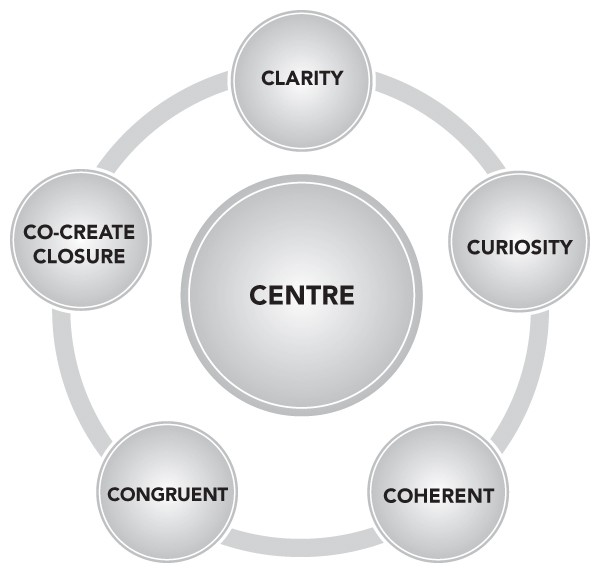
by Julia Felton | Nov 22, 2017
According to the 2015 Employee Trends Report by Quantum Workplace, one of the biggest areas of concern for team members is that there is often not open and honest communication with managers. So why is this? Why does miscommunication pervade at least 50% of business conversations? Is technology to blame or are there some other dynamics at work.
In my experience, yes technology does have a part to play. Emails and text can be taken out of context and without any supporting body language to back up the conversation they can fuel anxiety and in some cases, escalate beyond repair, this is why face to face conversations are so much more effective.
And yet face to face conversations too can lead to miscommunication especially when the manager fails to lead the conversation or is fearful about discussing the subject. Take for example if a manager needs to have a difficult conversation with team members, say about their performance. If the manager is not feeling confident in having the conversation they might not articulate clearly the problem and so the team member leaves confused about what they have done wrong. This then causes the situation to escalate and before long both parties become frustrated. I call these conversations Courageous Conversations as they require the manager to be ruthlessly honest and transparent, often saying things that no-one has said in the past.
Having a clear framework for navigating these Courageous Conversations is essential to help managers approach the situation with confidence and certainty. This is why I developed the 6 C’s to Successful Courageous Conversations Framework.
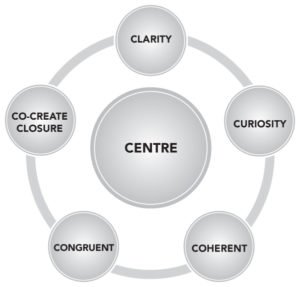
Throughout any Courageous Conversation, it is imperative that you manage your emotional energy. If as the leader of the conversation you are grounded and in the moment it will help the person you are talking to remain in this state too. Make sure you breathe deeply, stay calm and stay centered in your energy. Notice if you go off track and re-calibrate if necessary.
Step One: Clarity
Be clear on the reason for the conversation and the desired outcome. Most courageous conversations falter because there is a lack of clarity about the real issue. Get to the root cause of the problem and address this rather than focusing on the symptoms
Step Two: Curiosity
Cultivate an attitude of discovery and curiosity. Pretend you don’t know anything and learn as much as you can about the other person’s point of view. Watch their body language and listen to what they are not saying as well as what they are saying. Don’t interrupt, unless to clarify, and let the person talk until they are finished.
Step Three: Coherent
Make sure that you have heard and understood everything that has been said by repeating back to them what they said. This will ensure the team member feels that they have been listened to
Step Four: Congruent
When the team member has said everything, then share with them how you see things from your perspective. Help them see your position without undermining their own. Seek clarity on how the team member came to that conclusion and how it differs from your own stance.
Step Five: Co-Create Closure
Now you both understand each other’s point of view it’s time to co-create a solution. Brainstorm and come up with ideas that you both think might work. Find something the team member says that resonates with the solution you desire and build on this. If the conversation at any time becomes adversarial go back to inquiry and further clarification on their point of view. The more the team member feels listened to the more they will engage in co-creating a solution with you.
Remember, that for any situation you encounter there are always multiple perspectives, so be empathetic of the other person. Always be curious about how they see the situation and be aware of how your own judgments and prejudice may be impacting what you are observing. When you appreciate, that others have a different perspective from you and you can start to see things through their eyes, you are able to make more informed decisions, and in doing so increase team member engagement.
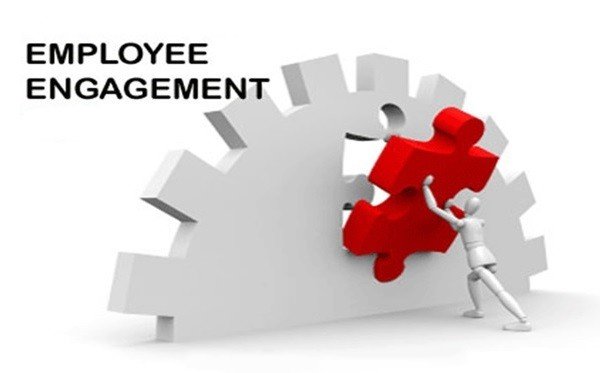
by Julia Felton | Nov 15, 2017
Small and medium-sized businesses are the life-blood of our economy, but they face specific, ever-increasing challenges. The world is in the mists of an employee engagement crisis, with serious and potentially lasting repercussions for the global economy.
Without a doubt, one of the greatest challenges SME’s currently face is the attraction and retention of talent. Intelligent, honest, hard working staff are critical to an organisation’s ongoing success, but now more than ever, good people are hard to find – and they are even harder to hold on to! To ensure employee job fulfilment, loyalty and maximum ROI, the key ingredient that is so often missing is Engagement.
In a recent Gallup poll, it was revealed that only 8% of UK employees are engaged at work, and most disengaged employees would change employers right now for as little as a 5% pay increase.
- The Engaged Employee – Does more than is expected. Works with a passion and feels a profound connection to the organisation they work for. They drive innovation and move the organisation forwards, providing maximum return on salary investment
- The Disengaged Employee – Does just what’s expected. Is essentially there in body only. They’re sleep walking through their day. Marking time, but not energy or passion, into their work. They provide minimum return on salary investment
- The Actively Disengaged Employee – Does less than expected. They aren’t happy at work; they’re busy acting out their unhappiness. Every day these workers undermine the efforts of their engaged co-workers, often providing negative return on salary investment.
Many organisations believe that strong leadership, and an exclusive focus on the development of their leaders is the key to a winning culture. They are mistaken. Leadership is not the heart of your organisation. The heart of your organisation is its people and their contribution. Without actively engaged employees, the leadership message cannot be heard..
Trained leaders today have been overloaded with leadership knowledge and theory, but too often they are not sufficiently activated. We need to turn our attention equally to our staff, getting them actively engaged regularly through new, innovative and inclusive methods, thus creating shared vision and buy in. It’s called ‘leadership living’ and all levels of the organisation participate together in the workplace. It is an all action methodology, which means all team members will live, breathe and grow together as a united force. It breeds true engagement, uncovers more leaders and builds a powerful and united culture. To ensure maximum impact and lasting change, everyone needs to be involved and everyone needs to be accountable.
So how do we engage our staff, encouraging maximum productivity, loyalty and ROI? It starts with changing habits as a collective, creating a movement. It’s about working as a unified team to change everyone’s individual and collective behaviours. The only way you can do this is through structured, strategic and regular discussions built on shared ownership, individual empowerment, and regular feedback sessions.
Also, traditional hierarchy has to go. The traditional organisational structure is not the most efficient option for businesses in the 21st century. Instead, successful companies are moving to an organisational structure that allows employees to make more of their own decisions and avoid the rigidity of traditional models. Generations X, Y and Z respond and are motivated differently to Baby Boomers. Equality creates unity, and unity will bring the truth out in your organisation. Think of truth as the splinters that need to be removed from your business. It may hurt, but we need to hear it, otherwise the pain will continue and exacerbate. We need to create an atmosphere for the truth to be tabled discussed and addressed without judgement.
If you’d like to explore how to get your teams more engaged then lets have a conversation as I utilise cutting edge group activation systems to get team members engaged and the results are engagement levels increasing my over 200%, whilst simultaneously the company experiencing growth in productivity and profitability.
















